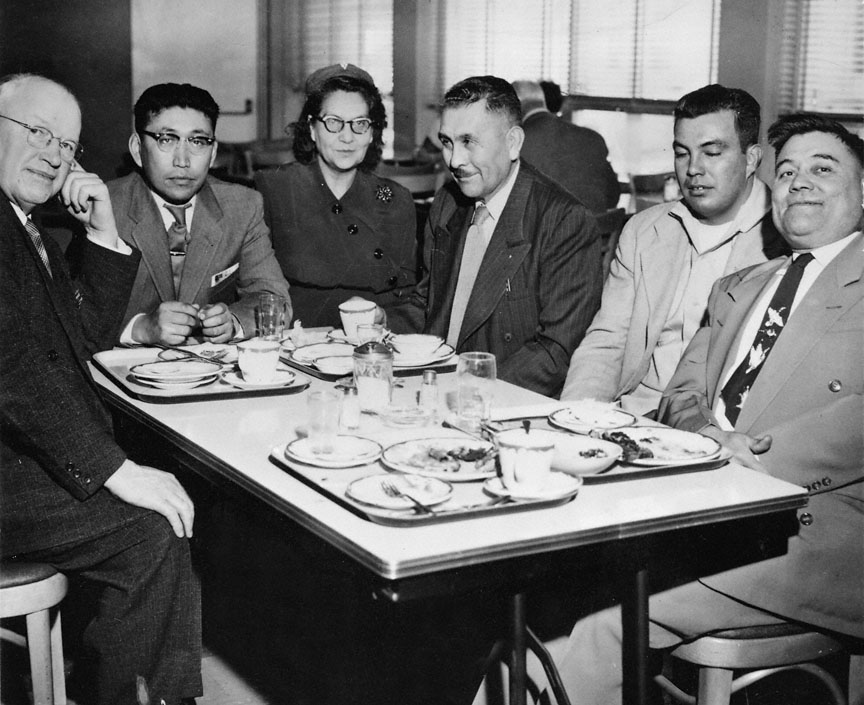To some Klamath Tribal members, which included Klamath, Modoc, and Yahooskin Indians, the reservation symbolized subservience to Anglo-American society, and for greater than 70 years, the reservation had altered the tribes’ way of life. The educational system administered by the Bureau of Indian Affairs suppressed the use of their native language and taught them that their Indian culture was inferior. According to anthropologist Theodore Stern, reservation-born Klamath Indians were essentially discouraged from identifying with their heritage. At the same time, Stern concludes, they were often rejected by white society. After World War II, some Klamath Tribal members rejected reservation life and advocated that tribal assets be divided among members rather than managed by the federal government. The Klamath Tribal Council Executive Committee, shown here in 1955, agreed that a change was needed, although they did not fully support termination. Their legal status and isolation on the reservation, however, had kept the Natives from enjoying their full rights as U.S. citizens.
In 1953, Congress passed House Concurrent Resolution 108 terminating federal supervision of certain Native American tribes. Consequently, the Act withdrew federal aid, confiscated millions of acres of tribal land, and removed tax exemptions. The Klamath Termination Act, signed by President Dwight Eisenhower in August 1954, allowed tribal members born before August 1954 to maintain joint interests in tribal assets or to withdraw and receive payment for their share of tribal assets. After termination, tribal living conditions decayed, alcohol abuse increased, and some Klamath Indians experienced psychological trauma resulting from the loss of their homeland. Many tribal members indicated they felt alienated, displaced, and unprepared to find employment.
In 1974, the U.S. Supreme Court ruled that the Klamath Tribes had retained their treaty rights to hunt, fish, and gather on their traditional tribal lands, and in 1986, they regained federal recognition. Although their land was not returned, the tribes were encouraged to develop a plan to become economically self-sufficient. After reviewing hundreds of ideas, the Klamath Tribes opened the Kla-Mo-Ya Casino in 1997.
Further Reading:
Boyle, John C. 50 Years on the Klamath. Medford, Oreg., 1976.
Haynal, Patrick. “Termination and Tribal Survival: The Klamath Tribes ofOregon.” Oregon Historical Quarterly 101, 2000: 271.
Written by Robery Donnelly, © Oregon Historical Society, 2003.
